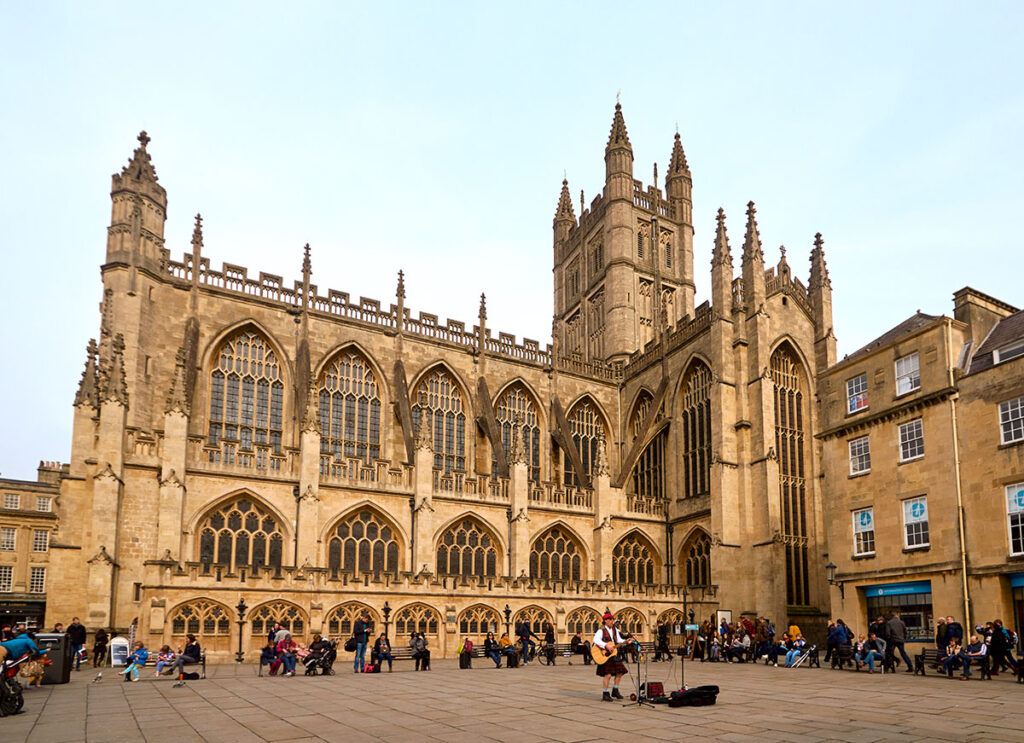Bath and Roman Bath Tours
We’re here today to explore this beautiful Georgian town, back in Roman times. The Roman Hot Springs you will admire, and the Pump Room you will marvel at. Bath always gives joy for the people for millennia. Just feel the Georgian Elegance in the city. No visit to Bath would be complete without at least a short insight into the beautiful Bath Abbey. A Church from wool sounds very familiar with Cotswolds style. Bath Abbey is the last example of a medieval Church built in Britain 500 years ago. Literally, it’s a new one. People call the Abbey as “The lantern of the West”. Let’s see and explore why people call like that.
Parade Gardens of Bath
Parade Gardens is one of the best examples of a Victorian Public Garden. The gardens overlook the Pulteney Bridge and Pulteney Weir on the banks of the Avon River. The flower bedding screens are some of the best in Britain. But, hang on! Bath is routinely banned from the “Britain in Bloom” Contest.
Roman Baths
Here is the reason to be in this lovely town. Bath is famous for its hot springs. It was a popular spa town for the ancient Romans. The terrace was completed in 1897 and it’s the date the Roman Baths reopened to the public but the history of Bath goes back to 860 BC when the Celtic King Bladud discovered the curative effect of the mud & spa. The story begins then. 46 Celsius degree surplus hot spa water from the spring, which pours into a Roman drain and then flows into the river. In the first century, the Romans built natural baths around the spring and built a temple dedicated to the goddess Sulis Minerva. “Minerva is the patron goddess… in her temple, the eternal flames never whiten into ash…”, these were the words of the Roman writer Solinus in the 3rd Century AD. During our visit, we will be witnessing the rising and falling of the Roman Baths.
Aquae Sulis
Throughout our tour we will examine life and death in Aquae Sulis, the worshipping of the Gods, impressive curses written on lead or pewter, monumental buildings, a temple courtyard, the altar, how the Romans controlled the water, gemstones in the drain, The Great Bath, and the Roman mosaic floor. We will also take a closer look for caldarium, tepidarium, frigidarium and natatio, the west baths, and the hypocaust system. You will have the opportunity to taste this 10,000-year-old spring water. To be honest, it is not the taste you are expecting, however, the mineral composition of the water is complex. Sulphate, Calcium, Chloride, Sodium, Bicarbonate, Magnesium, Silica, Potassium, Strontium, Fluoride, Bromide, Iron, Ammonium, Manganese, Boron, Iodine, Barium, Nickel, Zinc, and Selenium are just what your body needs. (Not suitable for pregnant women and children under 7)
The Pump Room
an elegant Georgian Saloon above the Roman Baths is another reason to visit beautiful Bath. They offer the best afternoon tea experience or a chance to raise a bubbly in this neoclassical grandeur. It’s a great quintessentially English experience in this Georgian town. Reservations are recommended, which and we can gladly arrange for you.


